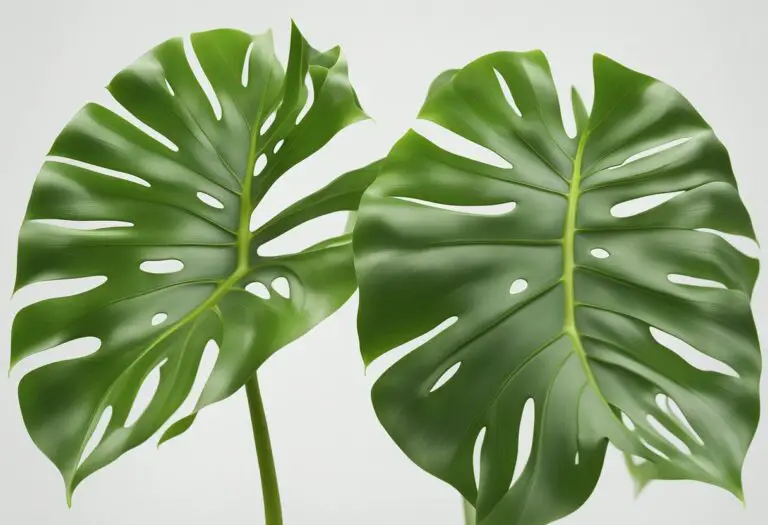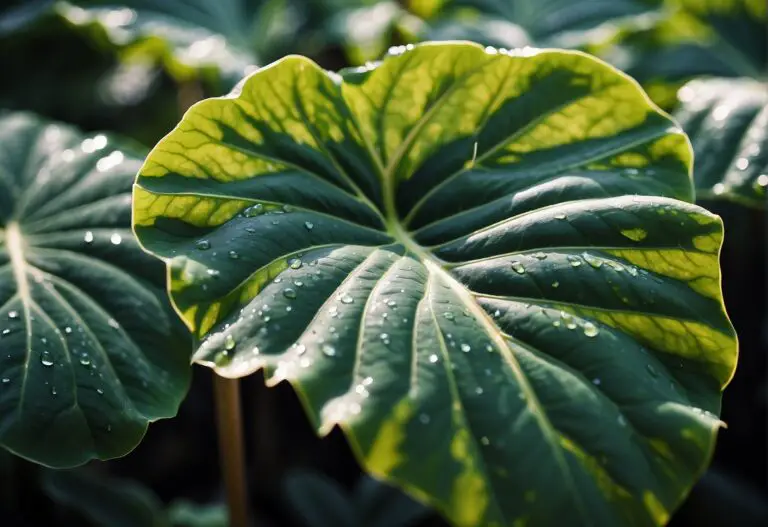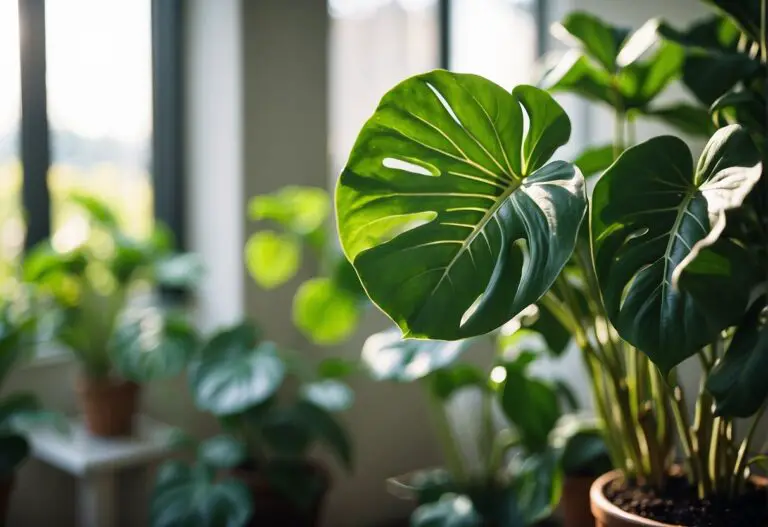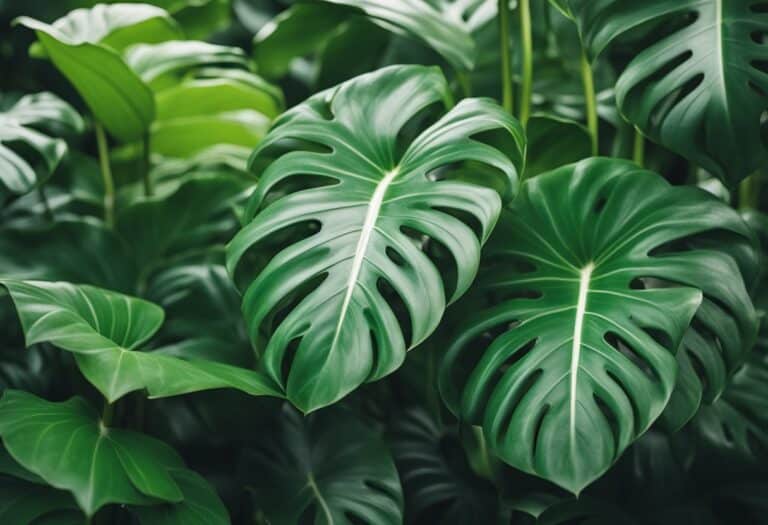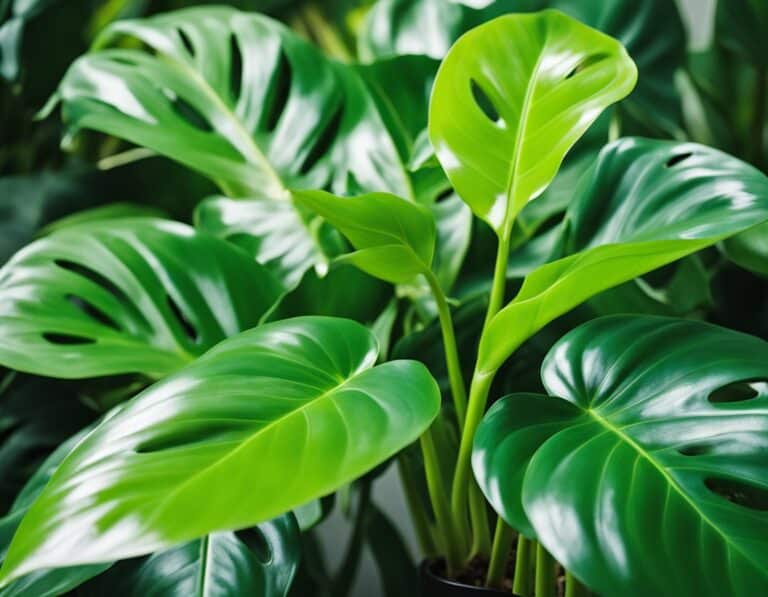Alocasia Ninja: The Low-Maintenance Houseplant You Need
If you’re looking for a unique and stunning houseplant, the Alocasia Ninja might be just what you need. This tropical plant features heart-shaped leaves that resemble the ears of an elephant.
With its striking appearance and relatively easy care requirements, the Alocasia Ninja has become a popular choice for plant enthusiasts.

To care for your Alocasia Ninja, you’ll need to understand its specific needs. This plant requires bright, indirect light and high humidity levels. Overwatering can be a problem, so make sure the soil is well-draining and allow the top inch of soil to dry out before watering again. With proper care, your Alocasia Ninja can thrive and add a touch of exotic beauty to your home.
Key Takeaways
- Alocasia Ninja is a unique and stunning houseplant with heart-shaped leaves resembling the ears of an elephant.
- Proper care requires bright, indirect light, high humidity levels, and well-draining soil to prevent overwatering.
- With the right care, your Alocasia Ninja can thrive and add a touch of exotic beauty to your home.
Understanding Alocasia Ninja

Origins and Botanical Profile
Alocasia Ninja, also known as Elephant Ear plant, is a popular houseplant that belongs to the Araceae family and is native to Southeast Asia. This beautiful plant is characterized by its large, heart-shaped leaves that resemble the ears of an elephant, hence its common name. The Alocasia Ninja is a hybrid variety of Alocasia and has become increasingly popular among indoor plant enthusiasts due to its stunning appearance and easy care.
The Alocasia Ninja plant has a unique botanical profile. It has a rhizomatous stem system, which means it grows horizontally underground and produces new shoots. The plant can grow up to 2-3 feet in height and has leaves that can reach up to 18 inches in length. The leaves are dark green in color and have a glossy texture.
Characteristic Features
One of the most striking features of the Alocasia Ninja is its large, heart-shaped leaves. The leaves are often described as having a velvety texture and can grow up to 18 inches in length. They are dark green in color and have a glossy sheen, which adds to their visual appeal. The Alocasia Ninja plant also produces small, white flowers that are hidden within its foliage.
The Alocasia Ninja plant is relatively easy to care for and can thrive in a variety of conditions. It prefers bright, indirect light and well-draining soil. It is important to keep the soil moist, but not waterlogged, as the plant is susceptible to root rot. The Alocasia Ninja plant also benefits from regular fertilization during the growing season.
In summary, the Alocasia Ninja is a beautiful and unique houseplant that is easy to care for. Its large, heart-shaped leaves and glossy texture make it a popular choice among indoor plant enthusiasts. With proper care, the Alocasia Ninja can thrive in a variety of conditions and add a touch of elegance to any space.
Caring for Your Alocasia Ninja

Alocasia Ninja is a beautiful and exotic plant that can add a touch of elegance to any room. To keep your Alocasia Ninja healthy and thriving, it’s important to follow a few basic care guidelines. Here are some tips on how to care for your Alocasia Ninja:
Ideal Soil Composition
Your Alocasia Ninja prefers well-draining soil that is high in organic matter. A mixture of peat moss, perlite, and coarse sand can create the perfect soil composition for your plant. Avoid using heavy soil that retains water as it can cause root rot.
Watering Requirements
Alocasia Ninja requires moderate watering. Water your plant when the top 1-2 inches of soil feels dry to the touch. Overwatering can lead to root rot and other fungal diseases, so be sure to let the soil dry out slightly between waterings.
Light and Temperature Needs
Alocasia Ninja prefers bright, indirect light. Direct sunlight can scorch the leaves, so it’s best to place your plant near a window that receives filtered light. The ideal temperature range for Alocasia Ninja is between 60-85 degrees Fahrenheit. Keep your plant away from cold drafts and extreme temperature changes.
Fertilization Strategies
Alocasia Ninja benefits from regular fertilization during the growing season. Use a balanced, water-soluble fertilizer every 2-3 weeks to provide your plant with the nutrients it needs to thrive. During the dormant season, reduce fertilization to once a month.
Remember, Alocasia Ninja is a tropical plant that requires a warm and humid environment to thrive. With the right care and attention, your Alocasia Ninja can grow into a stunning and healthy addition to your home.
Propagation Techniques
If you want to propagate your Alocasia Ninja, you have two options: division or stem cuttings.
Division
Dividing your Alocasia Ninja is the easiest way to propagate it. To do this, remove the plant from its pot and gently separate the roots into two or more sections. Make sure each section has at least one healthy leaf and a good root system. Then, plant each section in a new pot with fresh soil.
Stem Cuttings
If you prefer to propagate your Alocasia Ninja through stem cuttings, you will need to take a cutting from the stem of the plant. Cut a section of the stem that is at least 6 inches long and has a few leaves attached. Dip the cut end of the stem in rooting hormone and plant it in a pot with fresh soil. Keep the soil moist and the cutting in a warm, humid location until it roots.
Remember to be patient when propagating your Alocasia Ninja. It may take a few weeks or even months for new growth to appear. Be sure to provide your new plants with plenty of light, water, and nutrients to help them thrive.
Common Pests and Problems
Alocasia Ninja is a hardy plant that can withstand many pests and diseases. However, some common pests and problems can occur, and it’s important to know how to identify them and prevent them from damaging your plant.
Identifying Common Pests
The most common pests that can affect your Alocasia Ninja are spider mites, mealybugs, and scale insects. Spider mites can be identified by the web-like substance they produce on the undersides of leaves. Mealybugs look like small, white, cottony masses on the plant’s leaves and stems. Scale insects are small, circular, and have a hard, shell-like covering.
Disease Prevention and Treatment
Preventing diseases is essential to keep your Alocasia Ninja healthy. Overwatering can lead to root rot, so ensure that the soil is well-draining and that the plant is not sitting in standing water. Fungal diseases can occur in humid conditions, so ensure that there is adequate air circulation around your plant.
If you notice any signs of pests or diseases, it’s essential to treat them immediately. You can use insecticidal soap or neem oil to treat pests, and copper fungicides can be used to treat fungal diseases. However, be sure to follow the instructions on the label and avoid using too much, as this can damage your plant.
In summary, by identifying common pests and problems and taking preventative measures, you can keep your Alocasia Ninja healthy and thriving.
Design and Styling Tips
Pot Selection
When selecting a pot for your Alocasia Ninja, consider the size and material of the pot. The pot should be large enough to accommodate the plant’s roots and allow for growth. A pot with drainage holes is also important to prevent overwatering and root rot.
Additionally, the pot’s material can affect the plant’s health and aesthetic. Terracotta pots are porous and can help regulate soil moisture, while ceramic pots can retain moisture better. Choose a pot that complements your decor and enhances the plant’s natural beauty.
Placement Ideas
The Alocasia Ninja is a stunning plant that can add elegance to any room. When deciding where to place your plant, consider the lighting and humidity requirements. The plant thrives in bright, indirect light, so place it near a window that receives filtered sunlight.
It also prefers high humidity, so placing it in a bathroom or near a humidifier can help maintain its moisture levels. Additionally, the plant can be a great addition to a living room, bedroom, or office space. Its unique foliage and compact size make it a great choice for small spaces or as a statement piece in a larger room.
Overall, the Alocasia Ninja is a beautiful and versatile plant that can enhance any space. With the right pot and placement, you can create a stunning display that complements your decor and brings life to your home or office.
Frequently Asked Questions
How do you take care of an Alocasia Ninja plant?
To take care of your Alocasia Ninja plant, you should provide it with bright, indirect light and keep the soil moist but not waterlogged. You can increase humidity around the plant by placing a tray of water near it or regularly misting the leaves. Be careful not to overwater the plant, as this can lead to root rot.
What are the differences between Alocasia Ninja and Black Velvet?
The most noticeable difference between Alocasia Ninja and Alocasia Black Velvet is their leaf shape and size. Alocasia Ninja has smaller, more compact growth and a more rounded leaf, while Alocasia Black Velvet has larger, more elongated leaves. Both plants have dark green, almost black foliage with contrasting silver veins.
What is the mature size of an Alocasia Ninja?
The mature size of an Alocasia Ninja plant can vary depending on growing conditions, but it typically reaches a height of 1-2 feet and a spread of 1-2 feet.
What are the light requirements for an Alocasia Ninja?
Alocasia Ninja plants prefer bright, indirect light. Direct sunlight can scorch their leaves, while too little light can cause the plant to become leggy and weak.
What is the scientific name of Alocasia Ninja?
The scientific name of Alocasia Ninja is Alocasia ‘Ninja’.
Is the Alocasia Ninja considered a rare plant?
While Alocasia Ninja plants are not considered rare, they are a bit harder to find than some other houseplants. They are also highly sought after for their unique foliage and compact size.

